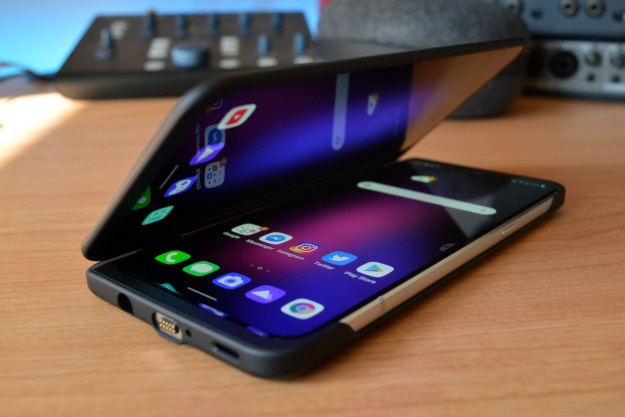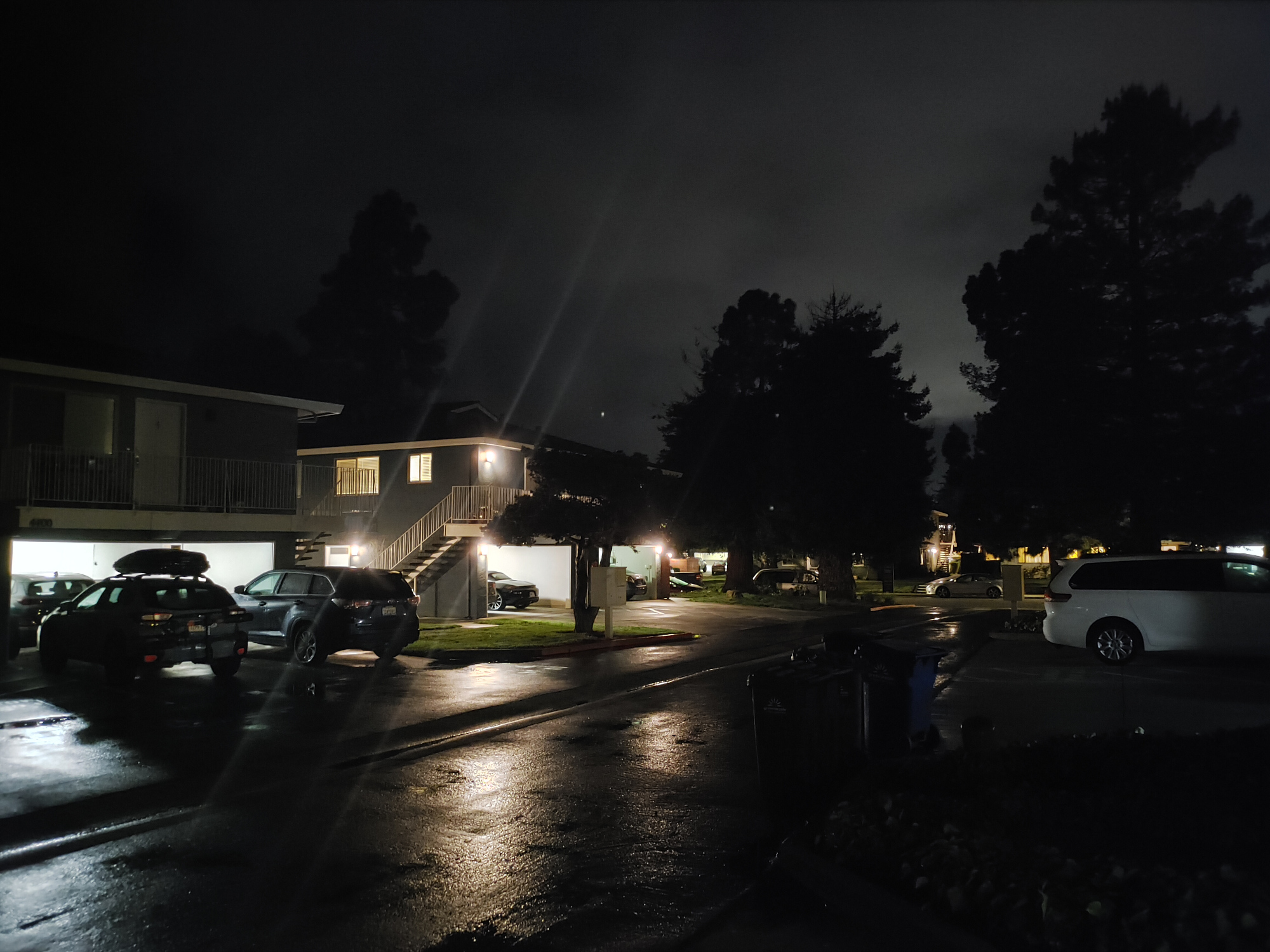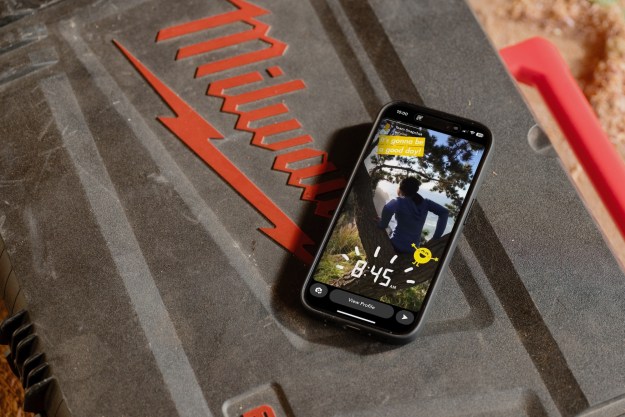
“The LG ThinQ V60 5G has a massive battery and unique dual screen case, but poor software and mediocre design holds it back.”
- Dual Screen case can be useful
- Excellent performance
- Long battery life
- Reasonable price
- Frustrating software
- Camera is far from the best
- Slow fingerprint sensor
The LG V50 ThinQ brought a number firsts for the company’s smartphone line. It was the first LG phone to support standard 5G bands, and the first LG phone to jump aboard the folding phone trend, albeit through an accessory that added a second display rather than a folding OLED screen. Now, LG wants to repeat the trick.
Just one problem. The phone it’s building off of — the
That’s not to say that the new LG V60 ThinQ is a bad phone. With a Qualcomm Snapdragon 865 processor, 8GB of
Design and ports
The LG V50 offered an iterative design refresh compared to 2018’s LG V40, so you would expect the newer LG V60 to modernize things a little. Thankfully, it does.
While the V50 had a notch nearly as large as that on the iPhone X, the V60 swaps things out for a smaller semicircle cutout. That helps make the huge display look even more expansive. While a pinhole cutout, like that on the Samsung Galaxy S20 series, would have made the phone look even more modern, the V60’s small cutout is acceptable.

The phone has two design “modes,” depending on whether or not you use the Dual Screen case. Without the case, the phone looks and feels relatively slim, especially for a device of its size. The camera module on the back isn’t flush like the V50, but it doesn’t protrude as much as the ones on the latest iPhone, Pixel, and Galaxy models.
On the bottom, you’ll find a USB-C port and a headphone jack, while on the left side, there’s the volume rocker and a dedicated Google Assistant button. The power button is on the right flank.
Add the display case, though, and it’s a whole different ball game. The LG V60 isn’t small to begin with, and with the case, it’s downright bulky. The advantage, however, is the second display, and protection for your phone in the event of a drop.
The phone, with the Dual Screen attached, is actually thinner than “true” foldable phones like the Samsung Galaxy Fold. With the case, the LG V60 sits in at 0.59 inches thick, while the Galaxy Fold is a chunky 0.66 inches thick when closed. That’s surprising, and a point in LG’s favor.
Placing the device in the case is easy. All you have to do is slide it in from the top, ensuring that the USB-C plug slots into the phone’s port. To charge the phone, you’ll then need to use the included magnetic USB-C adapter, or wireless charging. On the front of the case, you’ll see a small monochrome display that shows information like the time, battery life, and notifications. It’s a handy addition.
The LG V60 comes in two colors — Classy Blue and Classy White. They both look good, but I’m a fan of Classy White’s slightly pearlescent look.
Display quality
While the LG V60 ThinQ

Maybe mediocre isn’t the right word. The colors on the display were still bright and vivid, and thanks to the fact that it’s an OLED display, black levels were still deep and dark. We were easily able to see the display in bright sunlight, too. It’s an excellent display in many aspects. The competition has taken display quality to a new level, however, so the LG V60 ThinQ feels left behind.
In the display, you’ll also get an optical fingerprint sensor — which is another slight disappointment. While accurate, the sensor was a little slow to respond. I can’t help but assume an ultrasonic sensor would have provided better performance. There’s no facial recognition on this phone, so a speedy fingerprint sensor is important.
The Dual Screen case
Obviously, the LG V60 ThinQ’s most interesting feature is the Dual Screen case. It’s not a “true” foldable phone like the Galaxy Fold or Motorola Razr. While those phones offer a single foldable display, the Dual Screen accessory adds a second display of the same size and resolution.

The Dual Screen can come in handy, particularly when multitasking and gaming. When multitasking, the second display makes it easy to watch videos on one side and take notes on the other, and using the LG Game Pad with compatible games made mobile gaming feel that extra bit more immersive.
On the other hand, the extra bulk is a serious concern. If you’re used to a large phone and use your phone for a lot of productivity, then the case is absolutely worth the extra dough. But if you see it more as a gimmick, then you can safely skip buying one.
You can also swap the case on and off if you’d like. It’s easy to add or remove the case. You might just keep it at home. Or you might leave it at home for everyday use, but bring it along for multiday travel. This does add some versatility a “true” folding phone can’t provide. It also leaves you with an extra accessory to keep track of.
Performance
The LG V60 comes with a Qualcomm Snapdragon 865 processor, coupled with 8GB of
In day-to-day use, the V60 ThinQ is relatively fast, even during heavy multitasking. That’s expected from a Snapdragon 865-equipped phone. It performed well in benchmarks, though there aren’t many Snapdragon 865 smartphones out there to compare it with just yet. Here’s the benchmark scores we achieved.
- Geekbench 5 CPU: 920 single-core, 3410 multi-core
- AnTuTu 3DBench: 548,375
- 3DMark Sling Shot Extreme Vulkan: 6,542
The phone continued to perform well during mobile gaming. I played a few rounds of Fortnite and Asphalt 9 on the phone, with good results. This is what I’d expect to see from any flagship phone, however, so LG isn’t earning bonus points here.
Software
The LG V60 ThinQ
Some of the bloatware is commonplace for

Other aspects of the software could use work, too. LG’s skin has long been known to re-sort apps, and that still happens here. After choosing to sort apps alphabetically, we installed a few new apps — and they were placed right at the end of the list, instead of in alphabetical order. Also, the phone constantly told me to “learn how to use gestures.”
In a word, LG’s software can be described as annoying. In an era where even the likes of Samsung is trying to slim down its
Photo and video quality

LG has updated the camera array for the V60. The end result is a triple-lens system with a 64-megapixel f/1.8 main sensor, a 13-megapixel f/1.9 ultrawide lens, and a 0.3-megapixel time-of-flight lens that’s used to capture depth information.
It’s a little disappointing to see the lack of a telephoto lens. Most flagship phones offer this feature and some, like Samsung’s S20 line, offer zoom capabilities that range from great to class-leading. However, in LG’s defense, the fact that the main sensor is 64 megapixels allows the phone to capture lossless images at 2x zoom, and doing so in the Camera app is just as easy as on phones that do have telephoto lenses. With digital zoom, the phone is able to deliver photos at up to 10x.
Generally, photos taken in good light are detailed, but the camera struggled in low light, which is disappointing to see in 2020, when the likes of the iPhone 11 Pro and
The most interesting thing about the V60’s camera is the fact that it can capture 8K video, thanks to the Snapdragon 865 chipset. That said, doing so will cost you storage (362MB per minute), and despite the high resolution, the video didn’t look as good as that captured on the iPhone, thanks to the iPhone’s improved stabilization and better image processing.
The front-facing camera comes in at 10 megapixels, and it’s fine for most uses. Again, with low light, the camera struggled, and in portrait mode it had some problems with edge detection and hairs. That’s not a major downside, but something to note when other manufacturers are pouring millions into their camera software.
Great battery life
The best thing about the LG V60 ThinQ is its battery. The device is powered by a huge 5,000mAh battery. That’s a lot of juice, even for a phone with a 1440p 120Hz display. Considering the display comes in at 1080p and 60Hz, the phone easily lasts through a day of heavy use, with a solid 40 percent to spare.
The Dual Display accessory does, as you would expect, drain the battery quite a bit more, et I found the phone still had plenty of gas left in it, even after using the second display a good portion of time.
To really put the battery to the test, I set it up to continuously stream a 1080p video over Wi-Fi with the display on full brightness. It lasted just shy of 13 hours. That’s an excellent result.
Price, availability, and warranty information
The LG V60 ThinQ is $800 without the Dual Display accessory, or $900 with the accessory. Unfortunately, at the time of this writing, it was only available from AT&T and T-Mobile, and there’s no word just yet on an unlocked variant of the phone.
The V60 comes with a one year limited warranty, and if you register the device with LG, you’ll get a second year for free. The limited warranty covers manufacturer defects, so you’re unlikely to discover those in the second year of use.
If you’re looking for some discounted alternatives, you can check our list of the best smartphone deals.
Our take
The LG V60 ThinQ is a solid phone let down by a frustrating software experience and so-so features. From camera quality, to design, to display, the LG V60 ThinQ stops just short of its flagship competition.
However, if you’re simply looking for a flagship-tier phone, and don’t want to pay the $1,000+ for the Samsung Galaxy S20, you might consider the LG V60 ThinQ.
Are there any alternatives?
If you want a Snapdragon 865-equipped phone in the sub-$800 price range, this is the way to go right now — but only because it’s the only option. If you can wait a little, then it’s worth doing so, as the OnePlus 8 will likely offer a better display and software experience, and will likely support
If you don’t mind spending a little extra cash, then it’s worth considering the Samsung Galaxy S20, which offers a more modern design and better camera, and still supports
How long will it last?
If you do end up going for the LG V60 ThinQ
LG doesn’t have the best track record when it comes to software updates, so while the phone does ship with
Should you buy one?
No. We would only suggest buying this phone if you like the idea of the Dual Display case. Otherwise, its features aren’t compelling enough to warrant buying this device.
Editors' Recommendations
- Vivo’s V23 5G looks quite a lot like the iPhone 13
- Master your LG G8 ThinQ with these handy tips and tricks
- Qualcomm’s X60 5G modem will power the next generation of 5G flagship phones
- LG’s got some cool dual-screen smartphone trickery up its sleeve for IFA 2019
- Wave your hands if you want the powerful, yet more affordable LG G8S ThinQ









